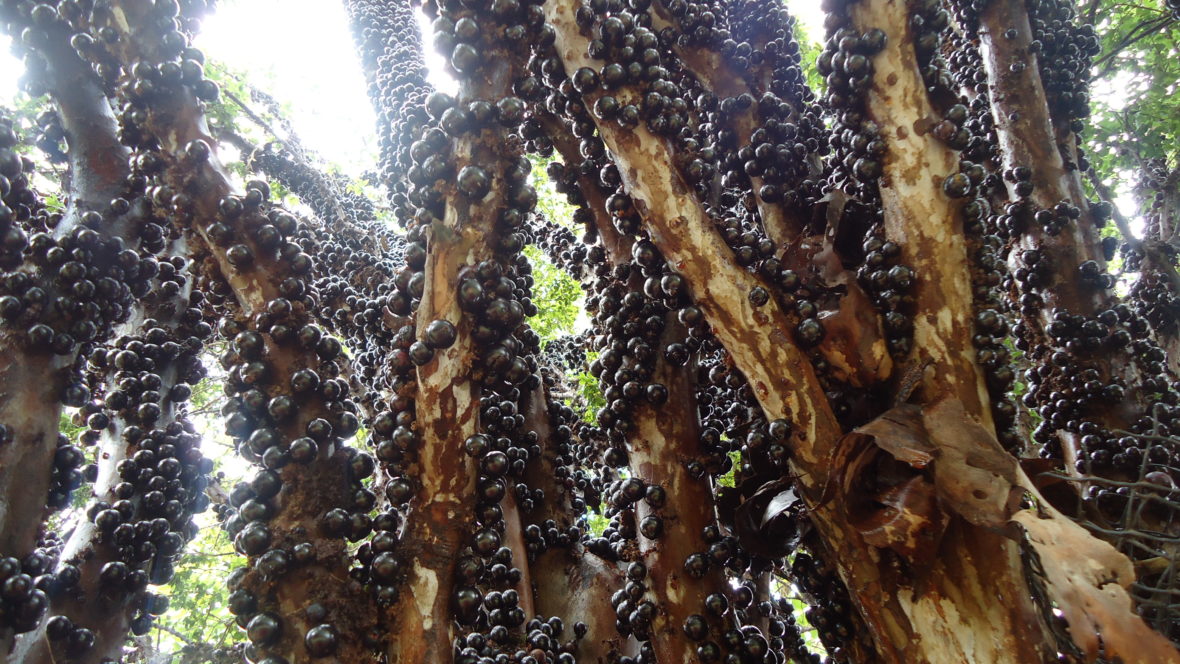Jabuticaba, also known as the Brazilian grapetree, is a tree in the family Myrtaceae, native to Minas Gerais and Sao Paulo states in Brazil. Related species in the genus Myciaria, often referred to by the same common names, are native to Brazil, Argentina, Paraguay, Peru and Bolivia. Take a look below for 23 more interesting and fascinating facts about jabuticaba.
1. The jabuticaba tree is grown for its purplish-black, white-pulped fruits.
2. The fruits of the jabuticaba tree can be eaten raw or used to make jellies, juice or wine.
3. The jabuticaba tree is a slow-growing evergreen that can reach a height of 15 meters if not pruned. It has salmon colored leaves when they are young, which turn green as they mature.
4. The tree prefers moist, rich, lightly acidic soil.
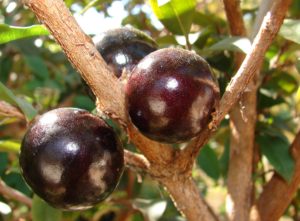
5. The jabuticaba tree is widely adaptable, and it even able to grow on alkaline beach sand type soils, as long they are tended and irrigated.
6. The flowers of a jabuticaba tree are white and grow directly from its trunk in a cauliflorous habit.
7. In an uncultivated state, the jabuticaba tree may flower and fruit only once or twice a year, but when continuously irrigated, it flowers frequently and fresh fruit can be available year round in tropical regions.
8. Jabuticaba is a thick skinned berry that is typically 3 to 4 centimeters in diameter. The fruit resembles a slip skin grape.
9. Jabuticaba has a thick, purple, astringent skin that encases a sweet, white or rosy pink gelatinous flesh. Embedded within the flesh are one to four large seeds, which vary in shape depending on the species.
10. Common in Brazilian markets, jabuticabas are eaten fresh and their popularity resembles grapes in the United States.
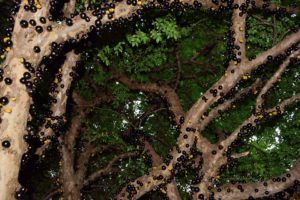
11. Fresh jabuticaba fruit may begin to ferment 3 to 4 days after harvest, so they are often sued to make jams, tarts, strong wines, and liqueurs.
12. Due to its extremely short shelf life, fresh jabuticaba fruit is very rare in markets outside of the areas of cultivation.
13. In traditional medicine, the sun-dried skin of the jabuticaba fruit has been used as a treatment for hemoptysis, asthma, diarrhea and gargled for chronic inflammation of the tonsils.
14. Several potent antioxidants and anti-inflammatory anti-cancer compounds have been isolated from the jabuticaba.
15. In Brazil, jabuticaba shares the same common name with several related species, most notably Myrciaria tenella and M. trunciflora.
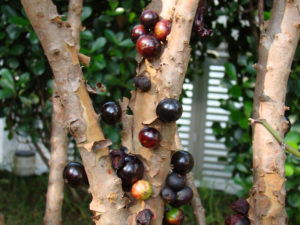
16. While all jabuticaba species are subtropical and can tolerate mild, brief frosts, some species are a lot more cold-tolerant.
17. Grafted jabuticaba plants can bear fruit in 5 years. The seed grown trees may take 10 to 20 years to bear fruit, though their slow growth and small size when immature make them popular as bonsai or container ornamental plants in temperate regions.
18. The name “jabuticaba” comes from the Tupi word “jaboti”, meaning tortoise, and “caba”, meaning place.
19. The Guarani name for jabuticaba is “yvapuru”, where “yva” means fruit and the onomatopoeic word “puru” is for the crunching sound the fruit makes when it’s bitten.
20. The jabuticaba tree appears as a charge on the coat of arms of Contagem, Minas Gerais, Brazil.
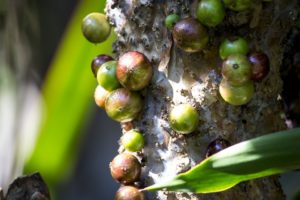
21. The jabuticaba tree has become a widely used species in the art of bonsai, particularly in Taiwan and parts of the Caribbean.
22. Jabuticaba fruits are ready to harvest when they have developed a full color and are somewhat soft like a ripe grape.
23. The fruit and flowers of some varieties of jabuticaba fruits are susceptible to a fungus caused rust during wet periods.

